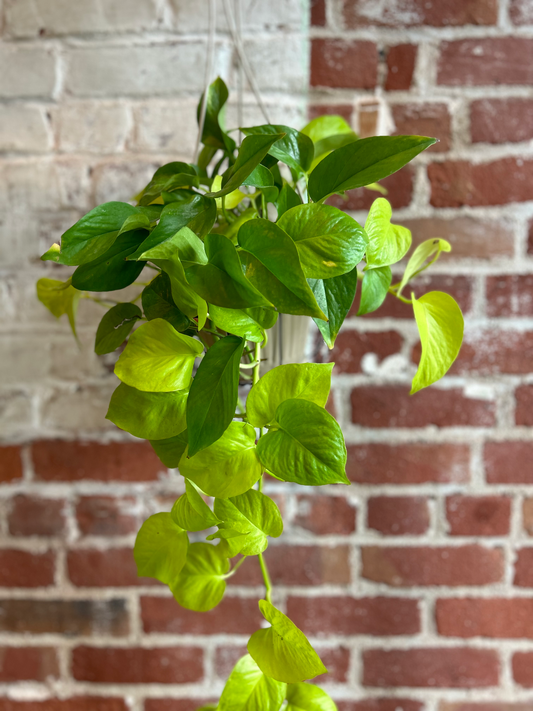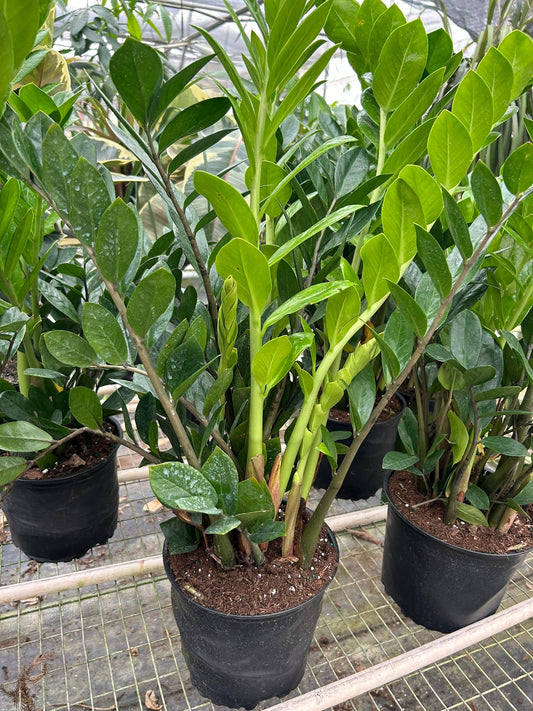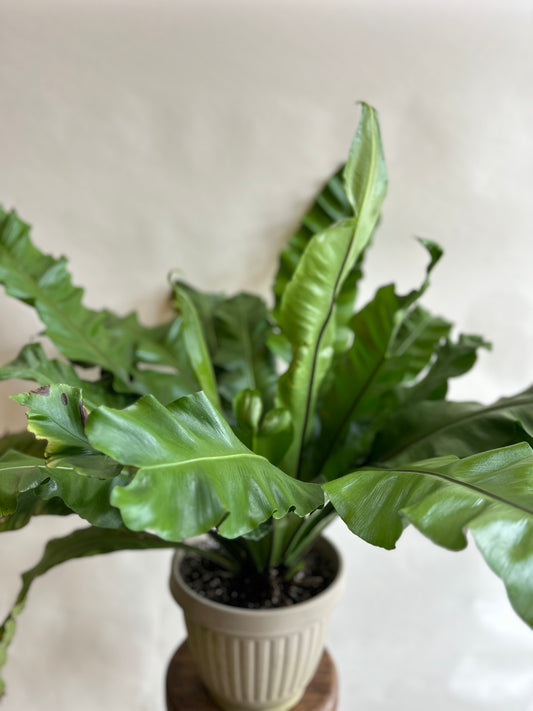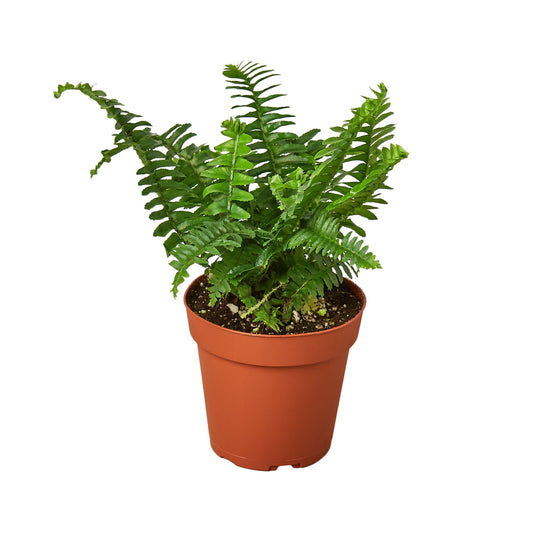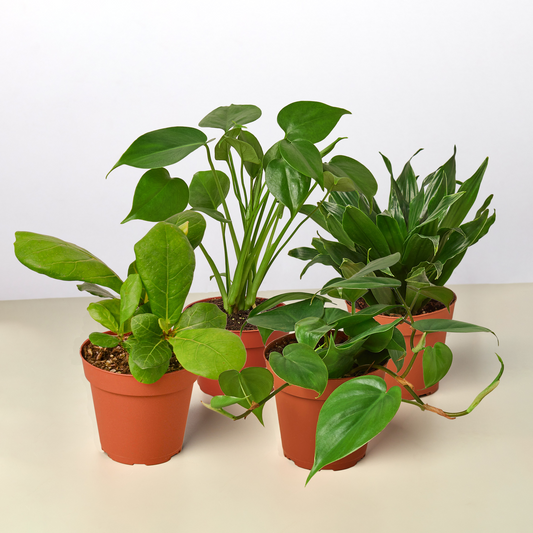How to Grow and Care for Norfolk Pines
Cafe Planta Team
Norfolk Pines, with their elegant, symmetrical branches and soft, needle-like foliage, are a popular choice for indoor plant lovers. Despite their name, these trees aren't actually pines, and they can bring a touch of green to your living space all year round.
We'll cover everything you need to know about growing and caring for these majestic trees. From selecting the right spot in your home to understanding their watering needs, you'll soon feel confident in keeping your Norfolk Pine healthy and thriving. Let's get started!
The Basics of Norfolk Pine Care
Before we dive into the nitty-gritty details, let's start with the basics. Norfolk Pines, or Araucaria heterophylla, are native to Norfolk Island in the Pacific Ocean. They thrive in bright, indirect light and prefer a little more humidity than your average houseplant. While they're often sold as small potted plants, they can grow quite large over time, reaching up to 200 feet in their natural habitat! Of course, indoors, they typically max out at 5 to 8 feet, depending on the conditions.
Here are a few key things to keep in mind:
- Light: Bright, indirect light is ideal. Too much direct sunlight can scorch their delicate needles.
- Water: They like moist soil, but overwatering can lead to root rot. Allow the top inch of soil to dry out between waterings.
- Humidity: Norfolk Pines prefer higher humidity, so consider a humidifier or regular misting.
- Temperature: They enjoy cooler temperatures, ideally between 60-75°F (15-24°C).
With these basics in mind, let's move on to more detailed aspects of caring for your Norfolk Pine.
Choosing the Right Location
Finding the perfect spot for your Norfolk Pine is crucial for its growth and well-being. These trees love a bright space with plenty of indirect sunlight. Think of it as giving them a cozy nook where they can soak up the light without being scorched.
If you're positioning your Norfolk Pine near a window, it's best to place it a few feet away to protect it from direct sun. An east or west-facing window typically works well. If your home doesn't get a lot of natural light, you might need to supplement with a grow light to keep your plant happy.
Norfolk Pines are pretty flexible with temperatures but dislike drafts, whether from windows, doors, or air conditioning vents. Keep this in mind when picking a spot. A consistent environment without sudden temperature changes will keep your Norfolk Pine thriving.
Watering Your Norfolk Pine
Watering can be a bit of a balancing act with Norfolk Pines. They enjoy having moist soil, but they're not fans of soggy roots. Overwatering can be a common pitfall, leading to root rot, which is something we definitely want to avoid.
Here's a simple way to manage your watering routine:
- Check the soil moisture by sticking your finger an inch into the soil. If it feels dry, it's time to water.
- When watering, do so thoroughly until you see water coming out of the drainage holes. This ensures that the roots are getting a good soak.
- Let the excess water drain completely and never let the pot sit in water.
During the winter months, Norfolk Pines enter a semi-dormant state and require less water. Be sure to adjust your watering schedule accordingly.
Understanding Humidity Needs
Norfolk Pines, being native to coastal regions, love a bit more humidity than the average houseplant. If your home is on the drier side, especially during winter, you'll need to find ways to increase the humidity around your plant.
Here are a few tips to boost humidity:
- Misting: Lightly mist your Norfolk Pine once or twice a week to mimic its natural environment.
- Humidity Tray: Place your plant on a tray filled with pebbles and water. As the water evaporates, it will add moisture to the air around your plant.
- Humidifier: Consider using a humidifier in the room, especially if you have several humidity-loving plants.
If you notice brown tips on the needles, it's often a sign that the air is too dry. Adjusting the humidity can help keep your Norfolk Pine looking lush and healthy.
Fertilizing Your Norfolk Pine
Feeding your Norfolk Pine is like giving it a little extra boost to grow strong and healthy. While they're not heavy feeders, a little fertilizer can go a long way.
During the growing season (spring and summer), use a balanced, water-soluble fertilizer. You can apply it every 4-6 weeks, following the instructions on the label. Be careful not to over-fertilize, as this can cause salt build-up in the soil and damage the roots.
In the fall and winter months, your Norfolk Pine will slow down its growth, so there's no need to fertilize during this time. Just focus on maintaining its current health and monitoring for any signs of nutrient deficiency.
Repotting and Soil Needs
Norfolk Pines don't need frequent repotting, which is great news for those who prefer low-maintenance plants. Typically, repotting every 2-3 years is sufficient, or if you notice roots growing out of the drainage holes.
When it's time to repot, here are the steps to follow:
- Choose a pot that's one size larger than the current one, ensuring it has good drainage.
- Use a well-draining potting mix. A cactus or succulent mix with some added peat moss works well.
- Gently remove the plant from its current pot, being careful not to disturb the root ball too much.
- Place it in the new pot, filling around the edges with fresh soil. Water it thoroughly once repotted.
Remember, Norfolk Pines prefer slightly acidic soil, so avoiding any alkaline amendments is a good idea. If you're unsure about the pH, you can always test it using a simple soil pH kit.
Dealing with Pests and Diseases
Like any houseplant, Norfolk Pines can sometimes encounter pests and diseases. However, with a bit of vigilance, you can keep these issues at bay.
Common pests include spider mites, aphids, and mealybugs. If you notice tiny webs, sticky residue, or fuzzy white patches, it's time to take action:
- Spider Mites: These tiny pests thrive in dry environments. Regular misting and cleaning of the leaves can help prevent them. If they appear, wash them off with a strong stream of water or use insecticidal soap.
- Aphids: These small, sap-sucking insects can be removed by wiping the leaves with a damp cloth or spraying them with a mix of water and dish soap.
- Mealybugs: Use a cotton swab dipped in rubbing alcohol to remove these pests from the plant.
In terms of diseases, root rot is the most common and usually a result of overwatering. Ensure your pot has good drainage and only water when necessary. If you suspect root rot, remove the affected roots and repot the plant in fresh soil.
Pruning and Maintenance
Norfolk Pines are relatively low-maintenance when it comes to pruning. However, occasional trimming can help keep your plant looking tidy and encourage healthy growth.
Here are a few tips for pruning:
- Remove any dead or yellowing branches at the base to prevent disease spread and improve the plant's appearance.
- Use clean, sharp scissors or pruning shears to make clean cuts.
- Avoid cutting the top of the plant, as this can disrupt its natural shape and growth pattern.
Regularly dusting the branches with a soft cloth or brush can also help keep your Norfolk Pine looking its best. Dust can block sunlight and reduce the plant's ability to photosynthesize effectively.
Incorporating Norfolk Pines into Your Interior Design
Norfolk Pines can be a striking addition to your home decor. Their unique, symmetrical shape and lush greenery make them a standout piece in any room.
Think about using your Norfolk Pine as a natural focal point. Its height and structure can draw the eye upward, making rooms feel taller and more open. Pair it with other plants of varying heights and textures to create a dynamic, layered look.
If you're going for a seasonal theme, Norfolk Pines can double as a delightful holiday tree. Decorate it with lights and lightweight ornaments to add a festive touch to your home without the need for a traditional Christmas tree.
Consider placing your Norfolk Pine in a decorative pot or basket to complement your room's color scheme. This not only enhances its aesthetic appeal but also protects your floors from any potential water damage.
Final Thoughts
Caring for a Norfolk Pine can be a rewarding journey, offering beauty and greenery to your home throughout the year. By understanding its needs for light, water, humidity, and occasional feeding, you'll keep your plant healthy and happy for years to come.
At Cafe Planta, we're passionate about helping you with all your plant needs. Whether you're a seasoned plant parent or just starting out, we're here to support you. Feel free to reach out via email or follow us on Instagram for more tips and inspiration. Let's grow together!


